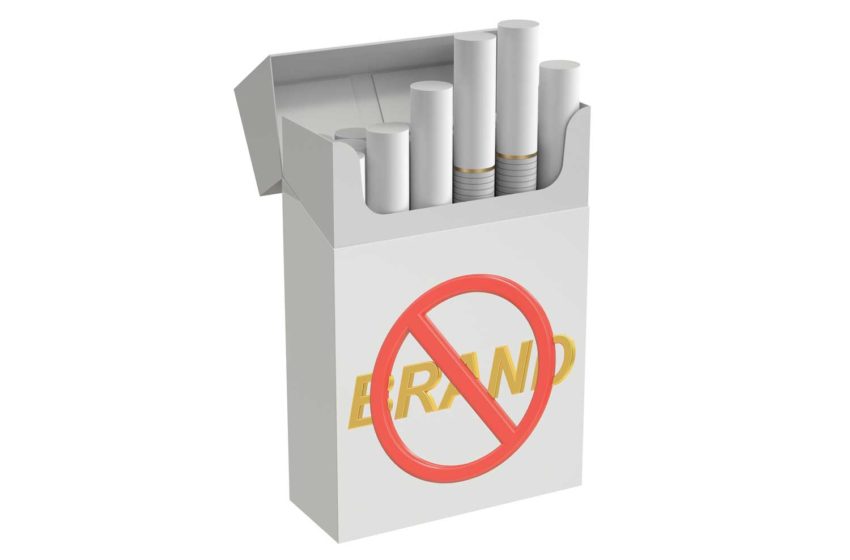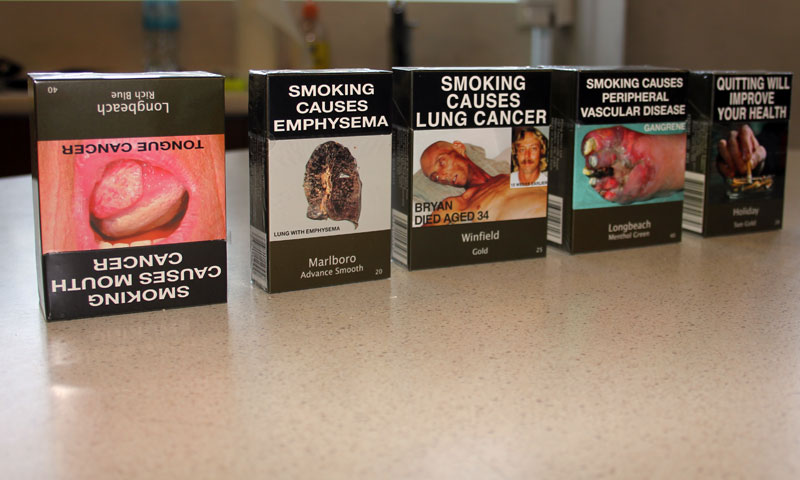The FCTC Conference of Parties’ recent meeting has put the spotlight back on tobacco ingredients. But the case for a ban remains flimsy.
By John Luik
With the fourth session of the Conference of the Parties to the World Health Organization’s Framework Convention for Tobacco Control (FCTC) in Punta Del Este, Uruguay, at the end of November, cigarette ingredients have again assumed center stage in the tobacco control playbook.
While the session dealt with a variety of issues, the most important was without doubt Article 9 of the FCTC—regulation of the contents of tobacco products. Article 9 states, “The Conference of the Parties, in consultation with competent international bodies, shall propose guidelines for testing and measuring the contents and emissions of tobacco products and for the regulation of these contents and emissions.”
According to the WHO press release of Nov. 20, the conference decided that “flavoring ingredients that increase attractiveness of tobacco products should be regulated in order to reduce the number of new smokers, especially among youth.”
According to the working group on Articles 9 and 10, “Tobacco products are commonly made to be attractive in order to encourage their use. From the perspective of public health, there is no justification for permitting the use of ingredients, such as flavoring agents, which help make tobacco products attractive.” Based on this claim the working group recommended that “Parties should either prohibit or restrict ingredients that may be used to increase palatability, such as sugars and sweeteners, flavoring substances, and spices and herbs …. Parties should prohibit or restrict ingredients that have coloring properties, such as inks and pigments ….”
Nothing new
While ingredients are only now attracting significant attention, the issue is not new. In July 1999, AHS/UK issued the report Tobacco Additives: Cigarette engineering and nicotine addiction, written by Clive Bates and Martin Jarvis of the United Kingdom, and Greg Connolly of the Massachusetts Tobacco Control Program, who is now a member of the Food and Drug Administration’s Tobacco Scientific Advisory Committee.
In that report, the authors noted that EU regulations permitted “over 600 additives” to be used in the manufacture of tobacco products under a loose and decentralized regulatory framework. “Although tobacco additives are generally screened for their direct toxicity, there is virtually no assessment of the impact additives have on smoking behavior or other undesirable external consequences.”
According to ASH, most additives were not used prior to 1970 and most are “not necessary.” The primary concerns that emerged from the report were that additives 1) posed a potential risk to users; 2) increased the addictiveness of cigarettes through “free nicotine” and 3) increased the attractiveness of cigarettes, particularly for children.
The report argued that in response to the ineffective regulatory regime for additives—it referred to the 1997 U.K. voluntary agreement—a new regulatory framework was needed in which “the manufacturer is obliged to demonstrate that no additional harm arises from tobacco product design decisions such as the use of an additive. This should include the impact of additives on smoking behavior, passive smoking and fire risks.” Included in this new regulatory framework would be the 1) disclosure of all additives, 2) disclosure of the purpose of all additives, 3) disclosure and all research on all additives, and, most significantly, granting regulators the “power to challenge any of the existing 6,000 additives currently allowed and to have them removed until the manufacture is able [to] show that no extra harm to the public arises as a direct or indirect result of the additive.”
The ASH report gained considerable traction as a blueprint for ingredient regulation. For example, a 2001 report prepared for the New Zealand Ministry of Health by Jeff Fowles proposed that New Zealand adopt a “regulatory framework for tobacco additives along the lines proposed by Bates et al.”
According to Fowles, the tobacco industry would need to justify the use of additives that have a pharmacological effect, numb peripheral nerves (menthol for instance) or affect the absorption of nicotine.
In a 2003 article in Tobacco Control, Borland argues that the harmfulness of tobacco products can be reduced in three ways—“by making it less toxic per unit used; by making it less addictive per unit used; and/or making it less palatable.” He asserts that the “regulatory framework needs to progress on all three.” In the mind of the anti-tobacco movement, ingredient regulation would address all three of Borland’s objectives: If one accepts the charges about ingredients, it would make cigarettes less toxic, less addictive and less palatable (read: attractive) to smokers.
By far the biggest push to the ingredients regulatory bandwagon came in 2009 when the Canadian government passed bill C-32, which was so broadly drafted that it would cover all flavorings in cigarettes sold in Canada. The ban effectively banned the sale of American-blend cigarettes in Canada. In the United States, meanwhile, the FDA was given regulatory authority for the ingredients issue. The legislation required the immediate removal of certain flavors along with the mandate to examine and decide on the use of menthol.
Lacking legitimacy
While the ASH and Fowles reports called for ingredients regulation at the national level, the FCTC has been driving regulation on a global scale. Part of the problem is that anti-tobacco activists don’t seem to understand how cigarettes are produced. Unable or unwilling to distinguish between characterizing and noncharacterizing flavors, they have argued to ban both.
However, banning noncharacterizing flavors would do little to advance the cause of public health. The flavors give cigarettes no distinctive taste yet are essential in the production of American-blend cigarettes, which account for the majority of cigarette sales outside of China. Is it a coincidence that the noncharacterizing flavors that would be banned under some proposals are used in the leading tobacco brands?
But amid this regulatory fever, the fundamental question remains as to whether any of these claims are justified. Is there a case for the regulation of tobacco ingredients? The working group on Articles 9 and 10 cites four reasons for regulation: the ad hoc and ineffectual nature of the current regulatory scheme; the toxicity of certain ingredients currently used in cigarettes, the fact that certain ingredients make cigarettes more attractive, particularly to young smokers; and the role of ingredients in promoting and maintaining cigarettes’ addictiveness.
While these are the “stated” problems, the deeper issue is that the ingredient issue offers the anti-tobacco movement a powerful way to control and ultimately change the composition of cigarettes, in effect to make them fundamentally unattractive. And this has the potential to be a more serious threat to the industry than, for instance, plain packaging. But just how legitimate are these claims about ingredients?
First, the claim that the existing regulatory framework is loose, ad hoc and ineffectual is at variance with the facts. In the U.K. for instance, the voluntary agreement requires manufacturers to supply the Department of Health with a list of all ingredients and the reasons for their use. Moreover the current regulatory framework for ingredients is regularly updated. Germany has banned two ingredients in the past nine years, while allowing the use of other ingredients for only limited periods.
Second, the claim that ingredients increase the toxicity of cigarettes is not supported by scientific evidence. Over the past 20 years, industry experts have published some 20 different ingredients toxicology studies. Lemus et al. published a study of the toxicological properties of cigarettes with varying amounts of vanillin in 2007 (Inhalation Toxicology) and Renne et al. published a study of the toxicological effects of flavoring and casing in mainstream smoke. (Inhalation Toxicology, 2006)
British American Tobacco has published a series of scientific studies examining the toxic effects of 482 ingredients. None of these published studies has supported the claim that ingredients represent an additional toxic risk to smokers or nonsmokers. In a recent review of the ingredient most commonly a focus of regulatory concern, menthol, Daniel Heck from Lorillard found “that menthol employed as a cigarette tobacco flavoring ingredient does not meaningfully affect the inherent toxicity of cigarette smoke.” (“A review and assessment of menthol employed as a cigarette flavoring ingredient,” Food and Chemical Toxicology 2010)
Third, there have been no credible scientific studies supporting the claim that certain ingredients make smoking more addictive. Indeed, the scientific and regulatory consensus about addiction is that it is nicotine, not some other ingredient that leads to addiction. Indeed, the ASH study does not cite any published scientific studies confirming that cigarette ingredients in some way “engineer” tobacco addiction.
Furthermore, the recently completed report on the Addictiveness and Attractiveness of Tobacco Additives by the EU’s Scientific Committee on Emerging and Newly Identified Health Risks (SCENIHR) published on Nov. 12, 2010, found no evidence that current tobacco ingredients have rewarding or reinforcing properties or are in themselves addictive. As the report notes, “In the peer-reviewed scientific articles assessed, there is no documentation for certain individual additives to cause addiction directly.” (p. 41)
Fourth, the claim that certain ingredients make smoking more attractive, particularly to children, is questionable on at least four grounds. First, the entire concept of attractiveness, as used in the ingredients debate, is both vague and unscientific, something that the SCENIHR report itself acknowledges when it notes that it is “necessary to perform experimental studies to assess the attractiveness of tobacco additives objectively.” But there are currently neither scientific criteria of what constitutes attractiveness nor studies demonstrating that certain ingredients promote or enhance attractiveness. Indeed there are no animal models that would allow for the assessment of attractiveness. As SCENIHR notes, “It remains difficult to distinguish the direct effects of these additives from the indirect effects such as the marketing towards specific groups.” The risk is thus that a subjective notion without scientific foundation—attractiveness—is being used as a convenient way to ban certain ingredients.
Second, there are no scientific studies linking smoking initiation with certain cigarette ingredients. Indeed, there are no studies showing that removing certain ingredients will make cigarettes less attractive to young people and reduce youth smoking. There are thousands of studies of youth smoking, yet none of these studies suggest that young people begin smoking because of the effect of certain cigarettes ingredients in making smoking attractive.
Third, there are no scientific studies establishing that smokers find it more difficult to quit or fail to quit because of certain cigarette ingredients.
Fourth, current prevalence levels and smoking patterns refute the “ingredients make smoking more attractive” argument. For example, if ingredients make smoking more attractive, one would expect to find higher prevalence rates in countries with cigarettes containing more flavor ingredients. Yet this is not the case. In France, Italy, Denmark and Switzerland, the tobacco market is dominated by cigarettes with high levels of ingredients, yet these countries have lower rates of smoking prevalence than the United Kingdom, where smokers prefer cigarettes with fewer flavorings. The world’s largest tobacco market, China, is dominated by Virginia cigarettes, which depend less on ingredients than do American-blend cigarettes.
The Winston problem
Finally, there is the “Winston problem” pointed out by Michael Siegel (The Rest of the Story, July 27, 2010). Winston cigarettes are “100 percent tobacco with no additives.” To heath activists, this should make them more acceptable than other cigarettes. However, anti-tobacco campaigners went “beserk” over Reynolds’ advertising campaign, complaining to the Federal Trade Commission, which forced Winston to carry a disclaimer noting, “No additives does not mean a safer cigarette.”
But according to the claims of the activists about additives and toxicity, this is precisely what removing additives should accomplish. More crucially, no additives should mean a cigarette that is substantially less appealing to smokers, particularly young people, according to this logic.
As Siegel notes, “Here then, is the fascinating conundrum for the WHO and the FCTC working groups. If they argue that there is a public health justification for banning all cigarette additives, then they must acknowledge that Winston cigarettes are a significant public health advancement …. On the other hand, if they refuse to acknowledge that Reynolds’ Winston cigarettes are a public health advancement, then they are admitting that there is no public health justification for their proposed regulations that would ban all cigarette additives.”
While ingredient regulations have little scientific support, one can nevertheless foresee their potential effect in terms of the tobacco marketplace and product innovation. In the marketplace, ingredient regulation could easily lead to the growth in the illicit trade since there will be a substantial demand for and profit to be made in supplying smokers with traditional products.
The assumption behind radical changes in tobacco ingredients is that smokers will simply accept them because they have no other choice. But this is folly. There is an enormous illicit tobacco market that has the ability and the incentive to provide smokers with precisely the sort of cigarettes they want- irrespective of any FCTC regulation. What the anti-tobacco activists fail to understand is that they cannot change the preferences of smokers by regulatory fiat.
In terms of product innovation, particularly the development of reduced exposure/risk products, the inability to use ingredients, particularly sugars, will make it more difficult for these products to achieve mass market appeal. This is because flavorings are necessary to compensate for the lower tar levels that these products will likely have. Reduced exposure products with greater harshness and an unattractive taste will hardly fulfill the public health objective of harm reduction.
Of course, this may well be the real objective of the anti-tobacco movement. The goal might be to make both conventional cigarettes and reduced exposure products so unattractive that fewer smokers will choose to smoke them. In this sense the arguments about toxicity and addictiveness are simply red herrings designed to divert attention from the larger project of engineering unpalatable cigarettes through substantially changing ingredients. An expansive reading of Article 9 of the FCTC might sanction this.
The trouble with this is that it amounts to prohibition by another name. But prohibiting tobacco, either directly or by stealth, is neither possible nor desirable, as even the most dedicated anti-tobacco regulator must recognize. Unfortunately the absence of science, hidden agendas and disregard for unintended consequences on display at Punta Del Este strongly suggest that they don’t.







